Tenants can face several challenges during their residences, such as difficulty in paying living expenses or under utilization of space. Renting out a room can be a good solution for both of these challenges. It enables the tenant to share living expenses with a third party, increasing the tenant’s savings. Renting out space also helps earn extra cash for the tenant. However, before a primary tenant can share a living space with the new tenant, an agreement in the form of a rental agreement should be considered.
The Room Rental Agreement is defined as a legally binding document signed between a current occupant of a residence and a new tenant who wishes to rent a room or apartment.
The document outlines the terms of the rental and the rights and obligations to be followed by both parties.
The agreement can also be referred to as a sublease or room lease agreement.
Agreement Templates
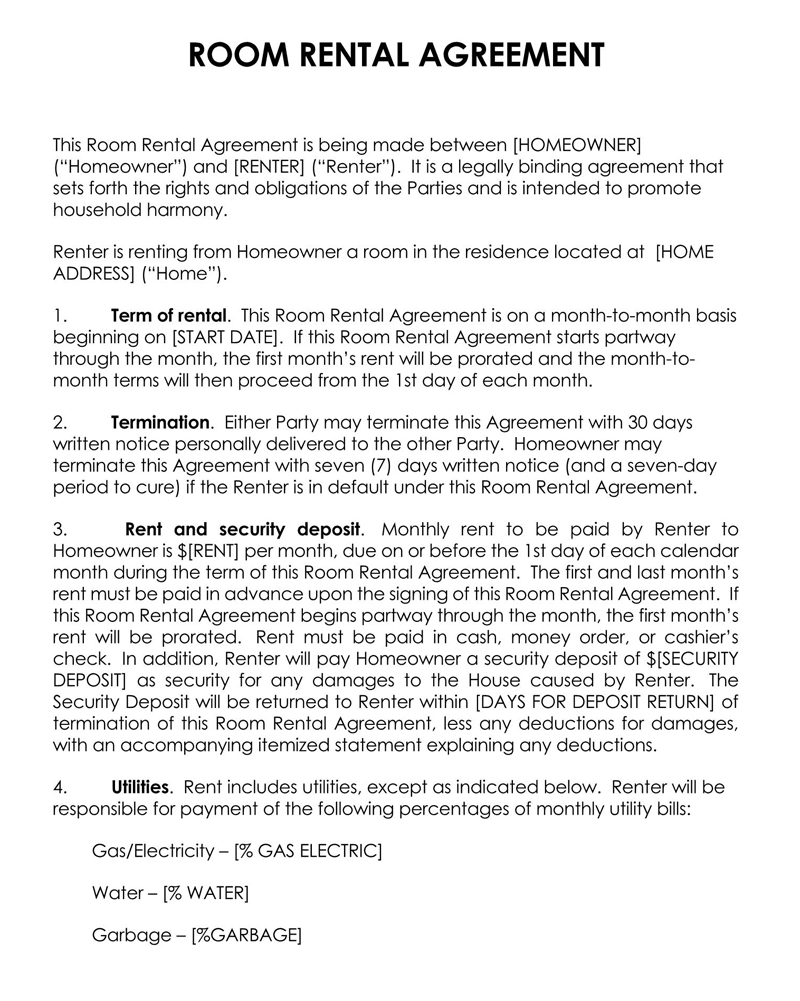
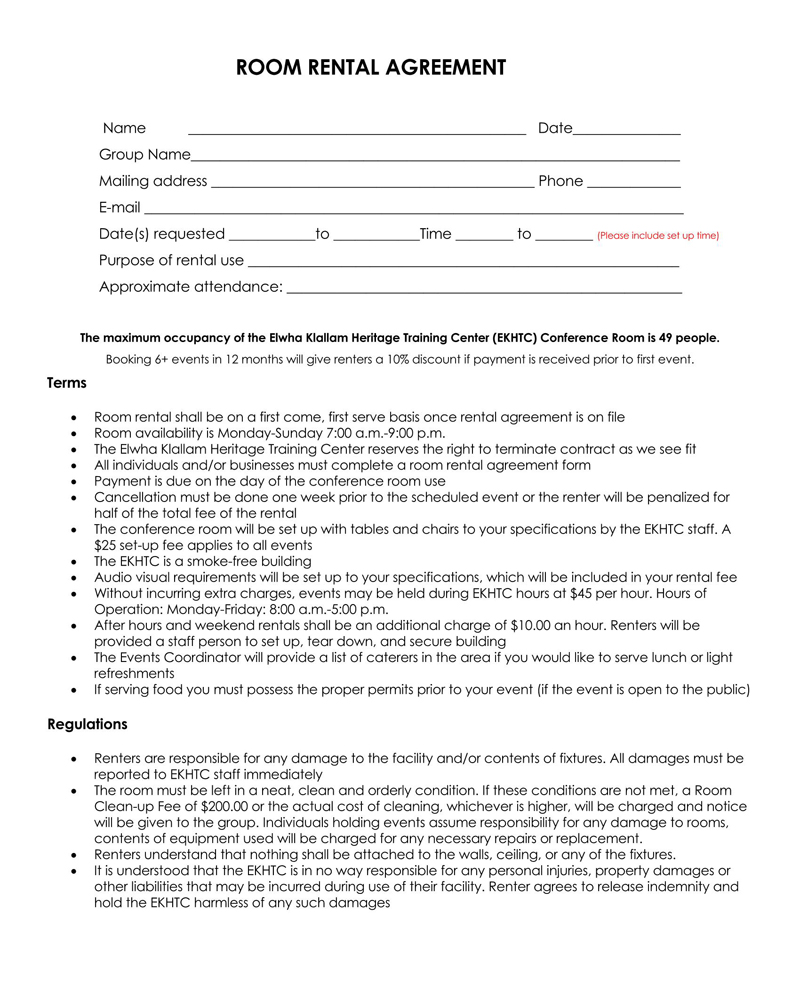
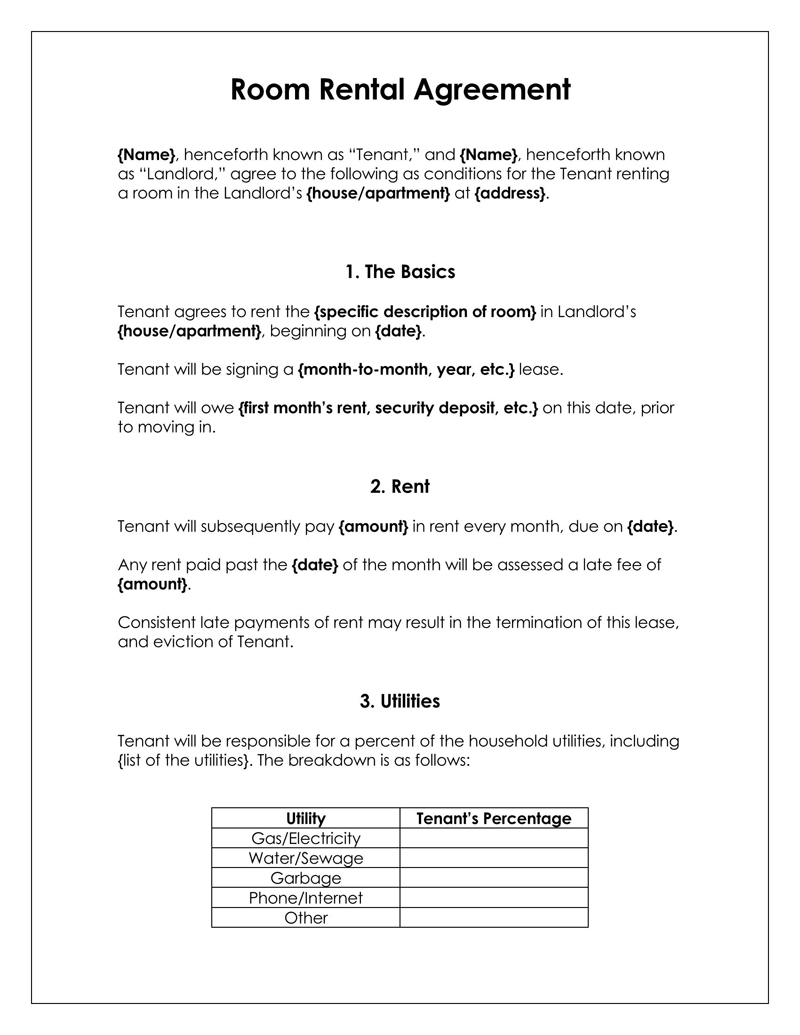
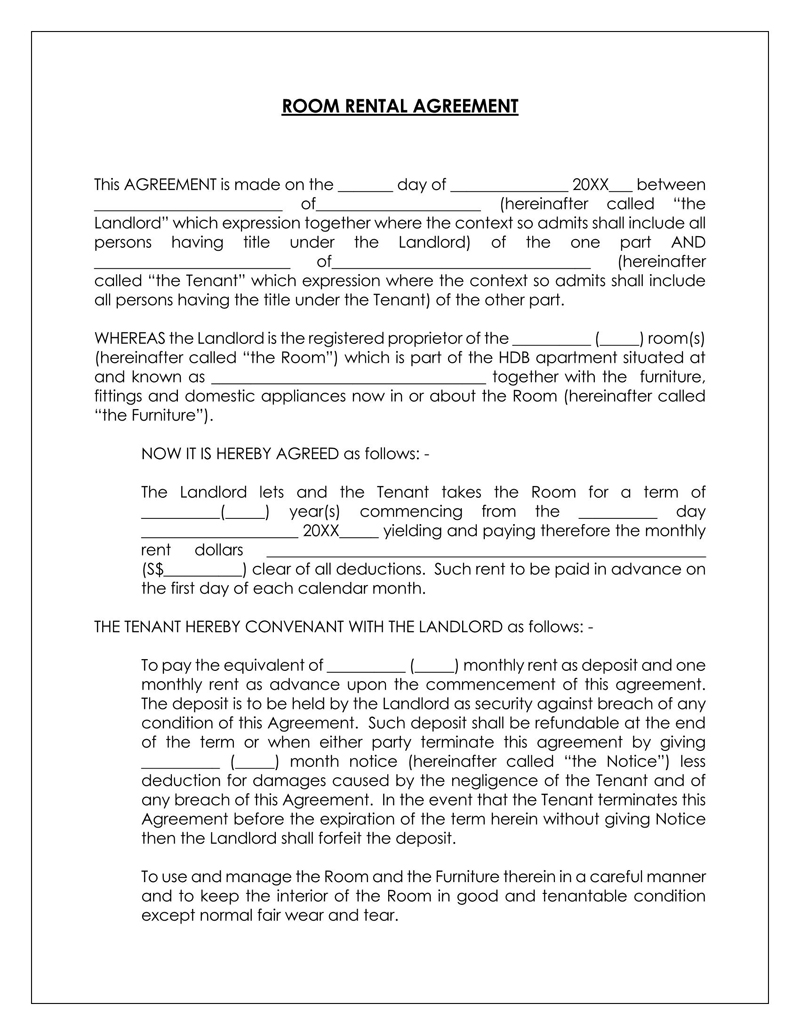
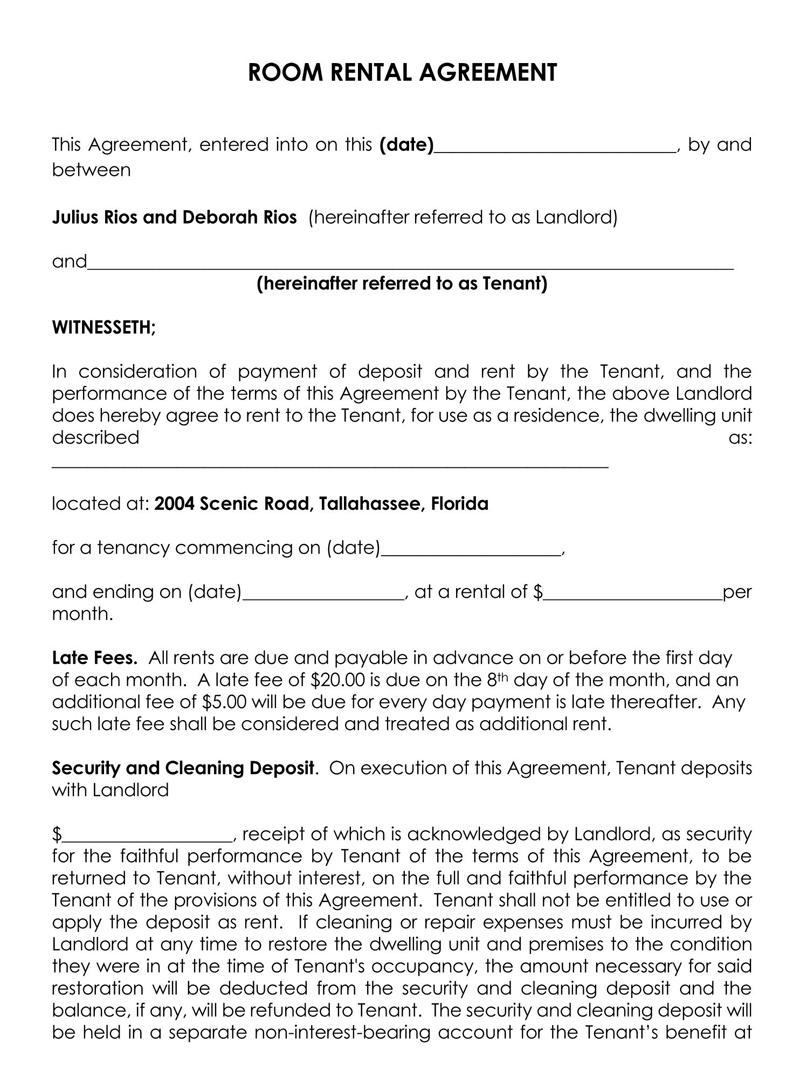
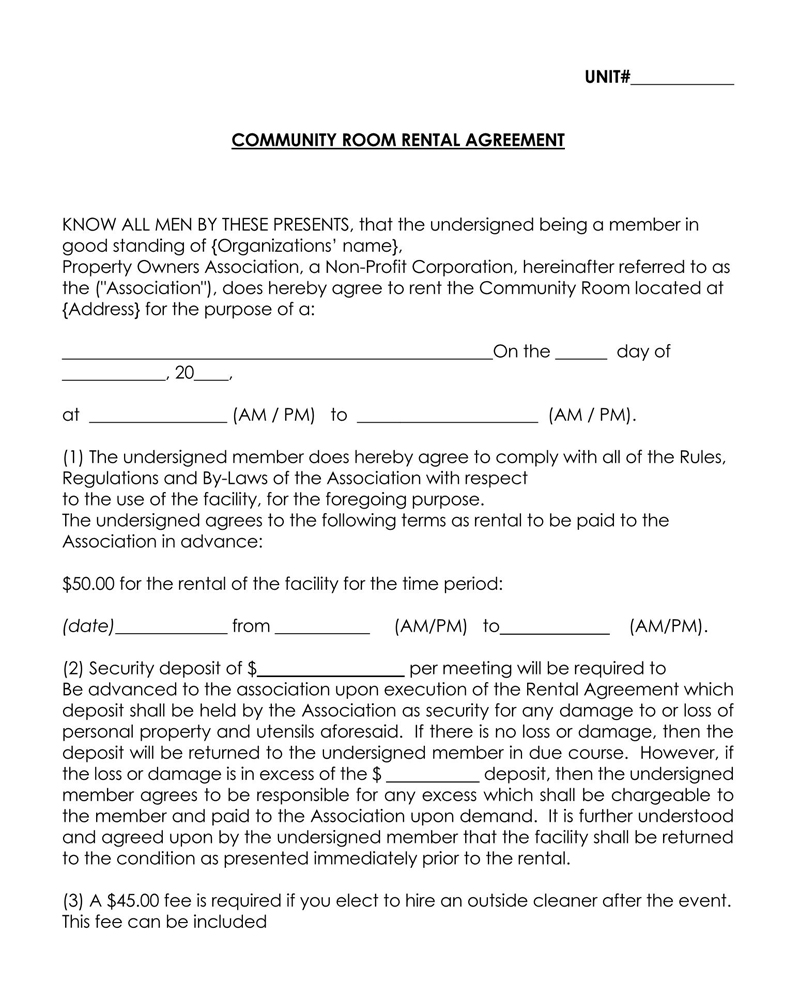
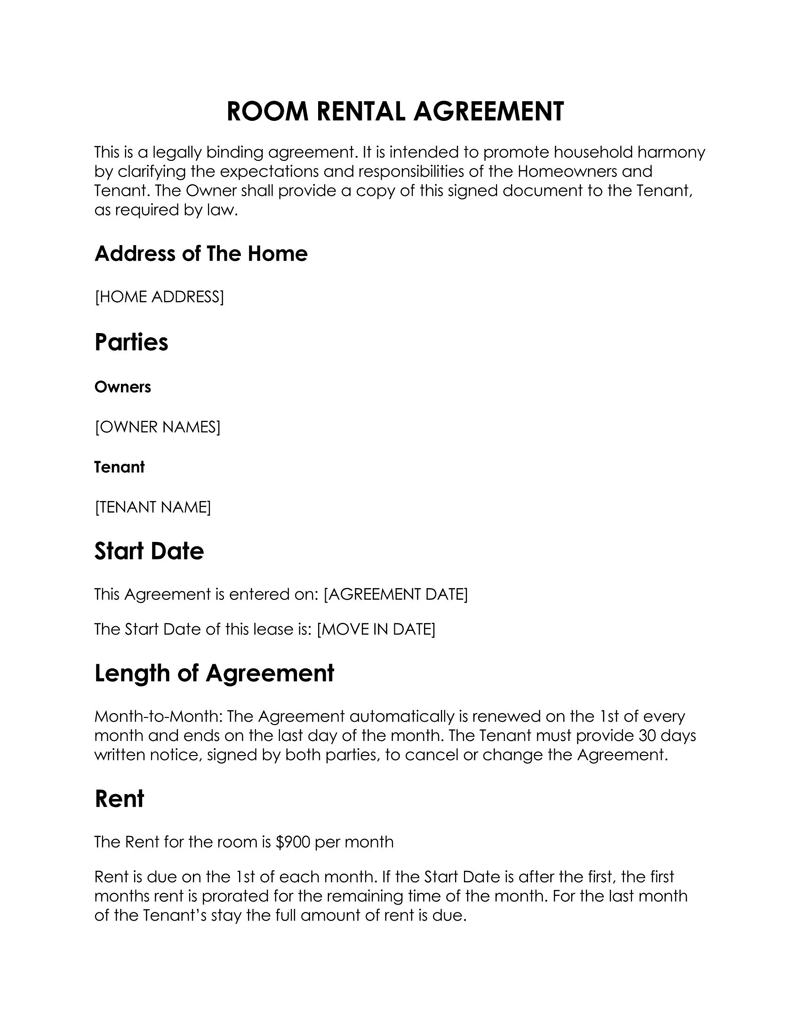
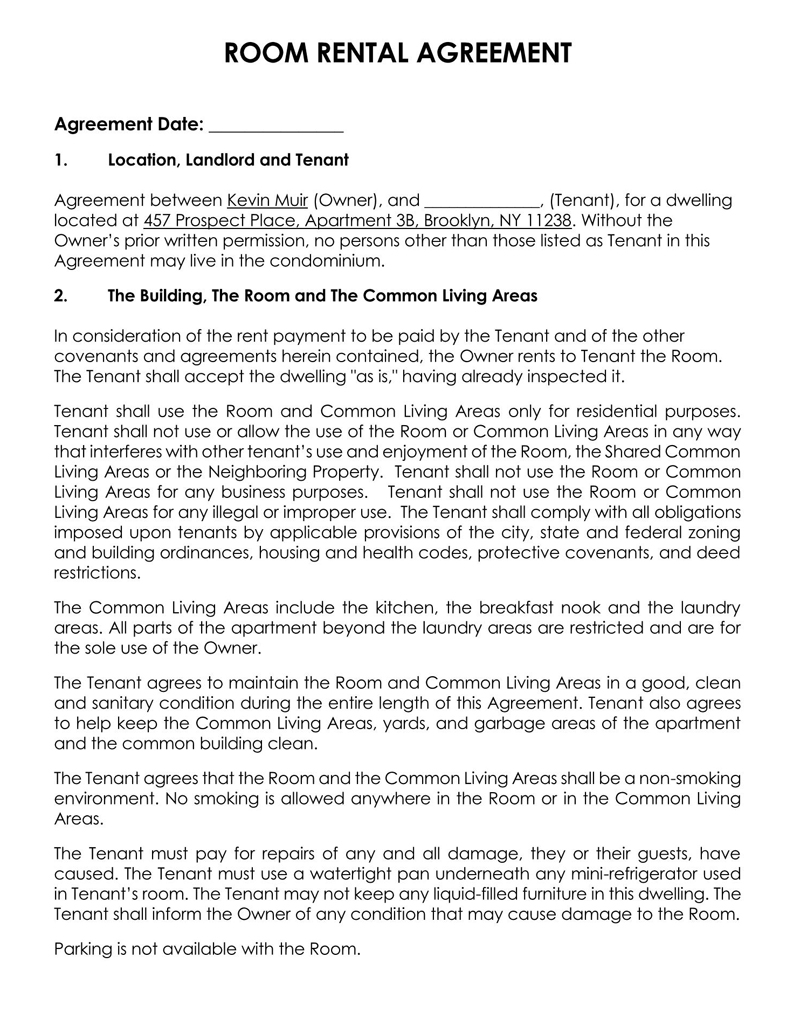
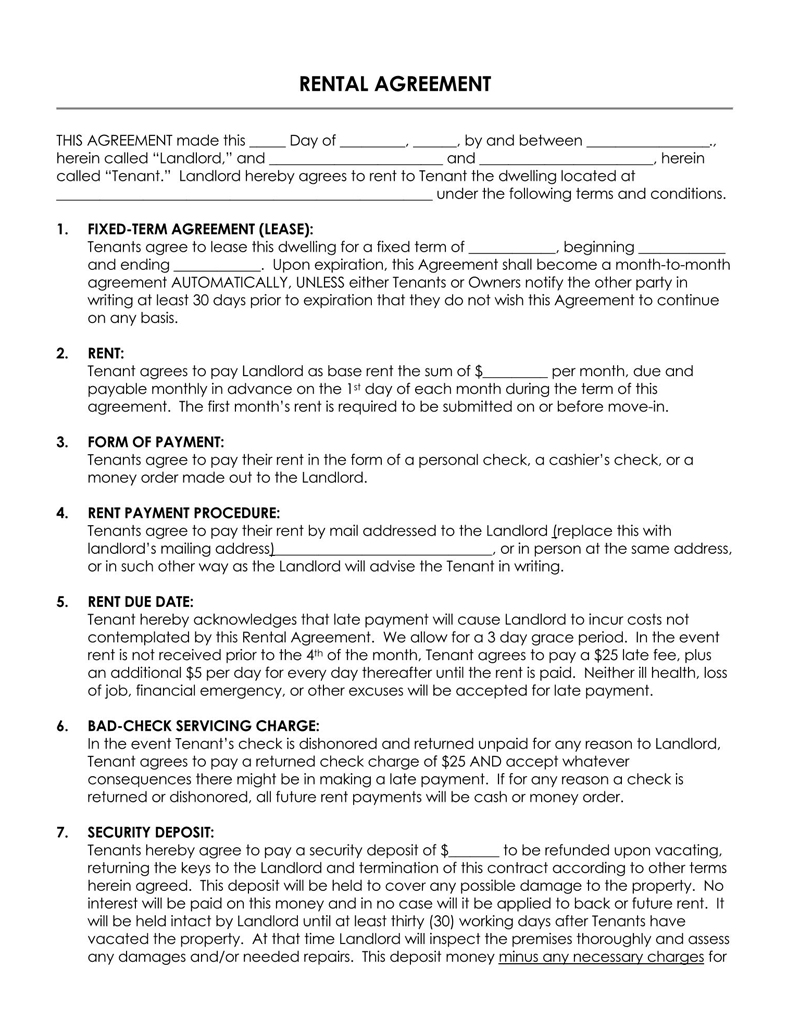
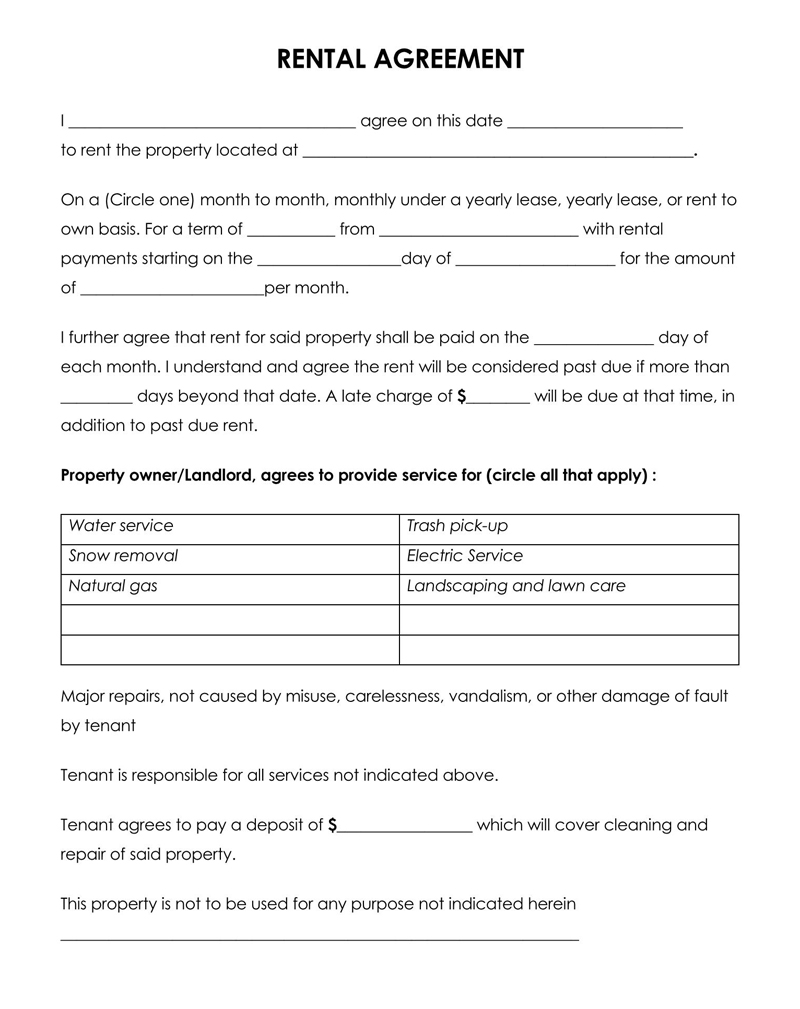
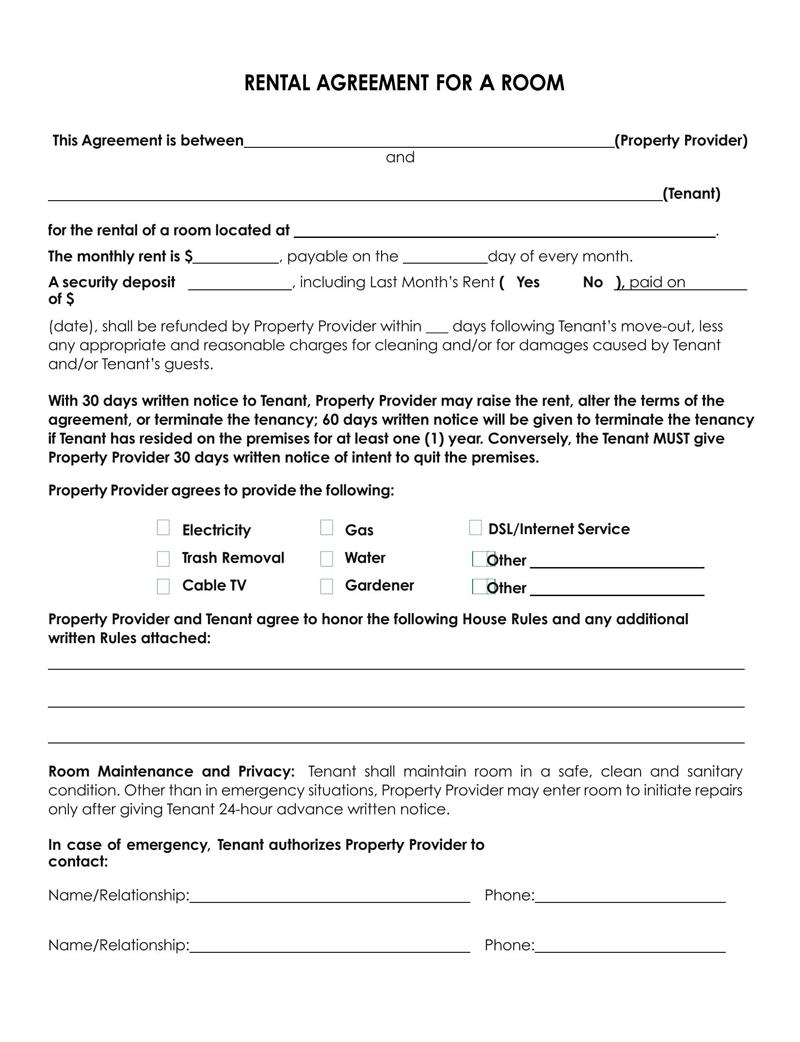
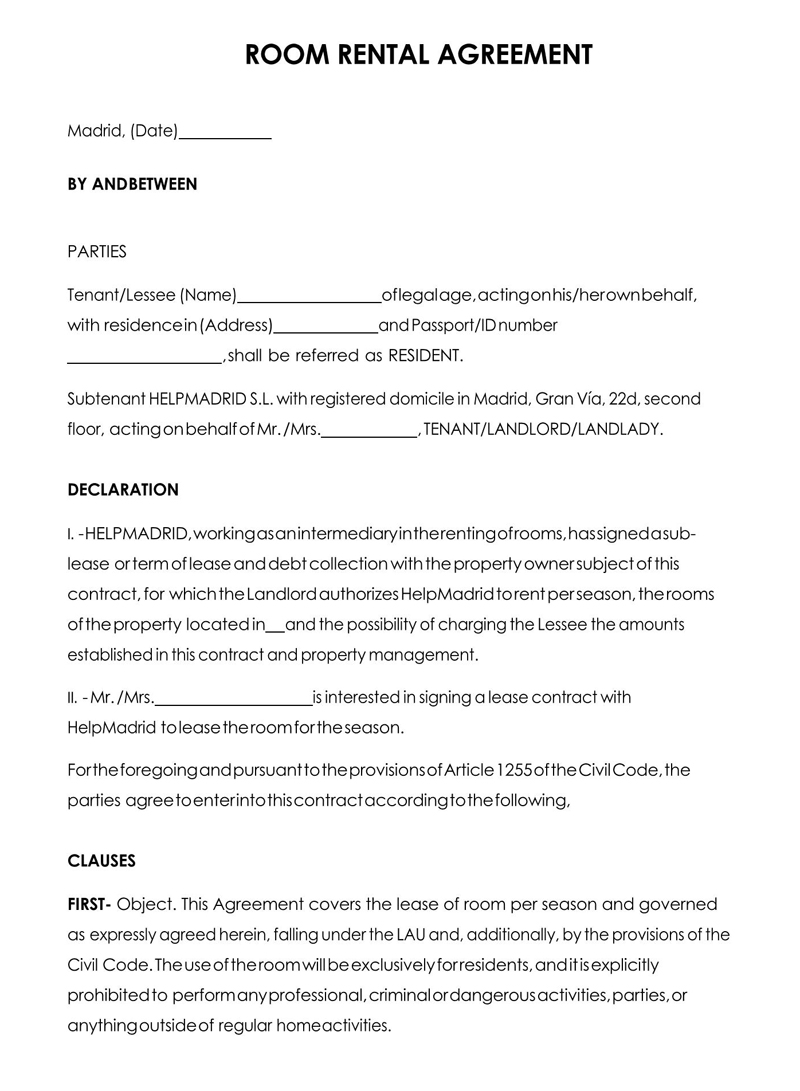
By states
Purpose of it
The primary purpose is to promote harmony between the principal tenant and the new tenant. Other than the principal tenant’s property, the agreement can be used by a homeowner or building manager interested in leasing a private room or a portion of the property to another party. It can help reduce disagreements between the parties involved by establishing clear communication channels.
It also acts as a legitimate record of the primary tenant’s standard expectations of the new tenant. This agreement can be used in court if the new tenant fails to meet the obligations indicated in the document, such as a rent payment. However, the court’s powers do not extend to trivial obligations that can easily be solved by a simple discussion between the involved parties.
Why Use the Agreement?
A primary tenant stands to benefit the most from the agreement. Understanding why the document is essential will ensure that the tenant can fully utilize the document. It also helps the tenant form a document that meets the unique needs of the living environment set to be shared with another party.
The following are justifications for why a tenant should consider creating an agreement:
Set boundaries
It enables the primary tenant to set clear boundaries with the new tenant. Setting boundaries helps create amicable living conditions for both the principal and new tenant. In addition, it ensures that both tenants agree on various issues that may otherwise cause dispute in the future.
Guests staying over
The privacy of the living space is essential for both the principal and the new tenant. The agreement helps ensure that explicit rules are set for guests staying over on the premises. The principal tenant can designate a day in which guests are allowed and what parts of the house or apartment they are prohibited from accessing
EXAMPLE
The primary tenant’s room.
Share household expenses
It enables both the principal and new tenant to share household expenses. The division of costs ensures that one individual does not carry the burden of all the expenses. In the absence of the rental agreement, the sharing of expenses would cause disputes, especially if one party is forced to pay more than half of the costs.
Maintenance duties
The agreement also helps divide household maintenance duties. The division of the duties ensures that one party is not solely burdened with everyday maintenance issues. Duties that may require consideration include shoveling the snow, cleaning the pool, and mowing the lawn, among other responsibilities.
Allocate quiet hours
The most common cause of conflict between tenants is noise complaints. The allocation of quiet hours ensures that both the principal tenant and the new tenant are comfortable with their living environment. It also helps create a peaceful living environment with neighbors who may also be affected.
TIP
To get an ideal tenant, the primary tenant must first establish what qualities make a suitable applicant. Once identified, the qualities should be placed in an advertisement to help attract applicants that meet the qualifications. The tenant should avoid anything discriminatory to ensure that the ad does not violate the federal Fair housing act. The primary tenant can place qualities such as an individual that is a nonsmoker, has a good credit score, and adheres to house rules. The advertisement can be placed on bulletin boards, the local newspaper, online or free weekly papers.
Room Rental Vs. Roommate Agreement
The differences between a rental agreement and a roommate agreement can be confusing. Clearly understanding the differences ensures that the primary tenant forms the proper document. One such clear difference is that the rental agreement is also called a ‘sublease,’ whereas the roommate agreement can be referred to as a housemate agreement ‘or ‘roommate contract.’
Other differences include the circumstances under which the two documents can be used.
EXAMPLE
This agreement requires the landlord’s approval before being implemented, whereas the roommate agreement does not. It is also only used when a tenant wants to sublease to a third party, whereas the roommate agreement is used when two individuals decide to move in together or when a tenant finds a roommate.
Lastly, the rental agreement must contain the original lease agreement elements, whereas the roommate agreement can exist independently as a document.
Information to be Included in Agreement
The tenant must start by distinguishing if the property up for rent is a unit or a room. The rental property can be considered a unit if new tenants have basic amenities such as a kitchen, bathroom, and living space. If the basic amenities are shared, then the primary tenant can consider it a rental room.
Next, the primary tenant should be sure to identify any state or zoning laws that may apply to rentals. In some states, a tenant may be required to obtain a permit or license before leasing property to a new tenant. A tenant must also consider whether or not the room will be furnished and how much property a new tenant will be allowed to bring into the space.
Finally, the tenant should consider screening new tenants before proceeding to discussions. Tenants should avoid renting to friends or family to avoid facing difficult situations such as evictions, which can be messy where a relationship already exists.
The following information should be included in the rental agreement:
Date
The agreement should contain information on the length of time the new tenant will stay in the property. In addition, both the official start and end dates of the tenancy should be indicated.
Name of tenants
The current occupant residing in the property and the new tenant should be listed in it. Both names should be indicated in full to ensure clear identification of the involved parties. In addition, the names help distinguish who the principal tenant is (individual leasing the property) and the new tenant.
Premises
The agreement should formally identify the property that the primary tenant and new tenant will be sharing. The premises can be identified by indicating the address on the rental agreement. The address must contain the street name, city, state, and zip code.
Rent amount
The total rent amount that should be paid to the property owner or manager should be indicated. The amount should further be broken down into the amount that each tenant must contribute. It should also contain the security deposit that each tenant is expected to pay.
Obligations and duties
The obligations and duties carried out by both tenants should be laid out in the agreement. Creating a comprehensive list of rules will ensure that the primary tenant is evident in the new tenant’s expectations.
Rules that can be indicated include appliances like the laundry machine, kitchen use, alcohol and drug use, quiet hours, pets, guests, designated parking area, common area use, and cleaning duties. Before drafting the document, the tenant should inquire about the potential new tenant’s habits, such as smoking or substance use.
Utility
The principal and new tenant must establish how the utilities will be divided. The document should outline the list of utilities and the names of the tenant responsible for paying them. The rental agreement should also indicate how payment will be made on each utility bill listed.
Parking
The principal tenant should indicate whether the new tenant can park within the premises, the space allocated to the individual, and how many cars can be parked in the space. The agreement should also outline how parking will be allocated to the new tenant’s guests.
Damages
It should outline the responsibilities of the tenant that damages anything on the property. Clear guidelines on how damages will be made if the individual responsible for causing it cannot be traced should be indicated.
Renter’s insurance
Information on if a renter’s insurance will be obtained should be indicated. The renter’s insurance provides coverage for the belongings, liabilities, and living expenses of the policyholder in the event of a loss. In addition, it protects the tenant against the loss of personal property within the rented premises.
Use of alcohol and smoking
The rental agreement should mention any prohibited substances that will not be allowed on the premises. A list of the substances allowed on the premises should be indicated, along with a designated area where the tenant can use the substance. The primary tenant should also indicate any intolerable behaviors that will not be allowed on the premises, such as yelling while drunk.
Miscellaneous
The agreement should outline how miscellaneous expenses within the household will be catered. In addition, it should identify how the responsibilities for these expenses will be distributed and who will be responsible for them. Miscellaneous expenses in a household usually comprise monthly living expenses that must be considered, like groceries, among others.
What Happens When You Don’t Have such an Agreement?
It enables a primary tenant to document the duties and obligations of the new tenant with whom living space is shared. It legally binds both parties to the stipulated terms of the agreement. Therefore, the primary tenant should consider the information to be included in the rental agreement. It will help reduce the chance of disagreements between both parties. It will also help in creating a tolerant and harmonious environment within the household.
The following are several consequences associated with the absence of agreement. Understanding the consequences will help a primary tenant decide if the absence of the document is worth the risk.
They include:
Lost money
A primary tenant runs a financial risk without a written commitment, especially if the new tenant moves out without notice. The primary tenant is left to carry the financial burden associated with maintaining and leasing the property. Money may also be lost if the new tenant fails to meet the primary tenant’s financial obligations verbally agreed on.
Lost time
The absence of an agreement can lead to the loss of time coping with problems such as dealing with trivial issues that could have been discussed early. The absence of the rental agreement often leads to the misinterpretation of the verbal agreement made with the primary tenant due to the lack of a reference document.
Lost property
The primary tenant also runs the risk of losing personal property lent to the new tenant. Since with the absence of the rental agreement the new tenant is not bound to the consequences of losing the items; the primary tenant cannot force them to return or replace the lost items. This also applies to damage to communal property. As a result, the primary tenant may be burdened with the financial obligation of paying for damage caused by the new tenant.
Mental anguish
New tenants that do not meet their obligations are likely to cause mental anguish to the primary tenant. If the landlord constantly confronts the primary tenant about the new tenant’s conduct, distress is likely heightened. When the primary tenant has an established relationship with the new tenant, such as a friendship, the relations are less likely to suffer and lead to conflict that can be avoided simply by implementing a rental agreement to ease accountability.
Frequently Asked Questions
A room rental agreement does cover multiple tenants. Therefore, the primary tenant must ensure that each tenant’s name is indicated in the agreement. In addition, the dates of tenancy of each tenant should be indicated.
Yes, a week-to-week or month-to-month room rental agreement can be executed. However, the terms of the rental document should indicate if the agreement is a month-to-month or a week-to-week. In addition, the primary tenant should indicate the expected payment dates to ensure that the document is clear.
The rental agreement and lease are very similar. However, the main difference is that the agreement covers a short term while a lease is applied to long periods. Another significant difference is that the primary tenant or the landlord can change the rental agreement. However, changes on a lease are harder to make and may have serious legal consequences.












